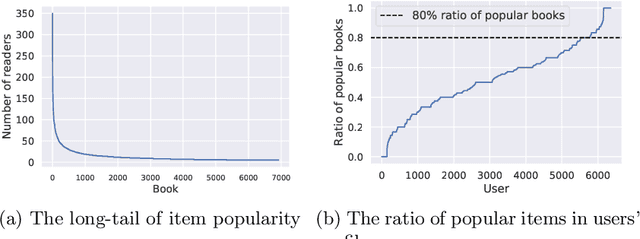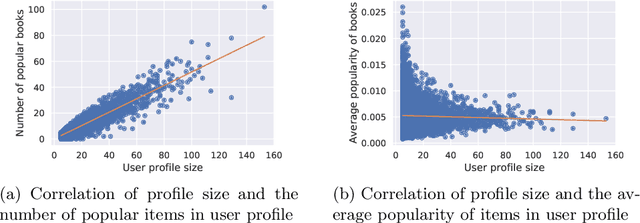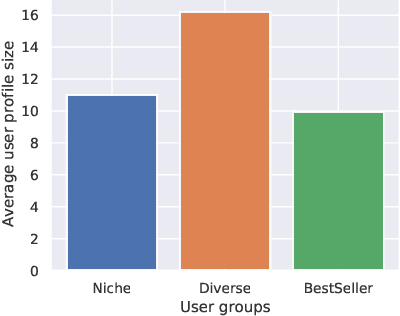The Unfairness of Popularity Bias in Book Recommendation
Paper and Code
Feb 27, 2022



Recent studies have shown that recommendation systems commonly suffer from popularity bias. Popularity bias refers to the problem that popular items (i.e., frequently rated items) are recommended frequently while less popular items are recommended rarely or not at all. Researchers adopted two approaches to examining popularity bias: (i) from the users' perspective, by analyzing how far a recommendation system deviates from user's expectations in receiving popular items, and (ii) by analyzing the amount of exposure that long-tail items receive, measured by overall catalog coverage and novelty. In this paper, we examine the first point of view in the book domain, although the findings may be applied to other domains as well. To this end, we analyze the well-known Book-Crossing dataset and define three user groups based on their tendency towards popular items (i.e., Niche, Diverse, Bestseller-focused). Further, we evaluate the performance of nine state-of-the-art recommendation algorithms and two baselines (i.e., Random, MostPop) from both the accuracy (e.g., NDCG, Precision, Recall) and popularity bias perspectives. Our results indicate that most state-of-the-art recommendation algorithms suffer from popularity bias in the book domain, and fail to meet users' expectations with Niche and Diverse tastes despite having a larger profile size. Conversely, Bestseller-focused users are more likely to receive high-quality recommendations, both in terms of fairness and personalization. Furthermore, our study shows a tradeoff between personalization and unfairness of popularity bias in recommendation algorithms for users belonging to the Diverse and Bestseller groups, that is, algorithms with high capability of personalization suffer from the unfairness of popularity bias.
 Add to Chrome
Add to Chrome Add to Firefox
Add to Firefox Add to Edge
Add to Edge